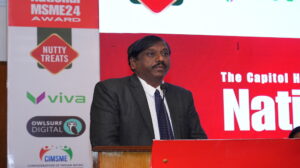Corporate Success, Ethics and Leadership: Lessons from Ramayana

Authored by Ajai Kumar, Corporate/Government/Regulatory Affairs | Public Policy Research| Policy Advocacy | Strategic Planning| Ex-Bureaucrat
In recent years, corporate governance and ethics have been under scanner. Growing suspicion of big businesses has been one of the reasons that spawned anti-establishment and anti-elitist feeling which later mutated into anti-liberal and anti-business in many parts of the world. In India, too, many of the leading corporate houses and icons have been toppled from their pedestals and lack of Corporate governance and ethics have come under sharp scrutiny. The public opinion against big businesses reached a situation where the then Chief Economic Advisor, Arvind Subramaniam, coined a new word ‘stigmatized capital’.
What induces big corporations to be lax in governance and ethics and what induces iconic business leaders to ignore or commit malfeasance or resort to unethical practices!! What constitutes success of corporates? Can truth and ethical governance be part of the corporate behavior to achieve that success? What is the role of corporate leaders in all of this? Do our scriptures have any lesson for corporate behaviour?
 Ramayana, the sacred Hindu religious scripture which is replete with lessons on human and organizational behavior, has some fruitful lesson on what constitutes success and what makes one achieve it. In Ramayana, Lord Rama preaches Vibhishana, a brother of demon king Ravana and who had defected to Lord Rama’s side, about what it is that leads to victory and success. We pick up the thread of story when the battle is nearing its end. Ravana’s brother Kumbhkarna , his son Meghanath and other demon generals have been killed. Ravana then himself comes for final battle with Lord Rama. Ravana is riding a Yuddha-ratha (war chariot), well protected by armour, and equipped with sophisticated weapons, while Lord Rama does not have a chariot, or armour or even shoes, his bow and arrows were all that he had. Witnessing this unequal contest, Vibhishana becomes very much concerned about the safety and victory of Lord Rama—and, out of extreme love and affection, expresses his doubts to Lord Rama
Ramayana, the sacred Hindu religious scripture which is replete with lessons on human and organizational behavior, has some fruitful lesson on what constitutes success and what makes one achieve it. In Ramayana, Lord Rama preaches Vibhishana, a brother of demon king Ravana and who had defected to Lord Rama’s side, about what it is that leads to victory and success. We pick up the thread of story when the battle is nearing its end. Ravana’s brother Kumbhkarna , his son Meghanath and other demon generals have been killed. Ravana then himself comes for final battle with Lord Rama. Ravana is riding a Yuddha-ratha (war chariot), well protected by armour, and equipped with sophisticated weapons, while Lord Rama does not have a chariot, or armour or even shoes, his bow and arrows were all that he had. Witnessing this unequal contest, Vibhishana becomes very much concerned about the safety and victory of Lord Rama—and, out of extreme love and affection, expresses his doubts to Lord Rama
“My Lord, you have no chariot, nor any protection either for your body (in the shape of armour) or for your feet (in the form of shoes). How then are you going to conquer this valorous and mighty Ravana?”
Lord Rama preached Vibhishana allegorically in the terminology of the chariot, the warrior and the weapons but it is indeed a lesson on individual and organizational behavior for success or victory. If this world is likened to a battlefield then the chariot is the organizational structure and warrior on the chariot is the corporate leader who leads corporation to success or victory. This preaching of Lord Rama is often called Vibhishana Gita.
Battle between Ram & Ravana: Vibhishan Gita
 Lord Sri Rama says—
Lord Sri Rama says—
“My dear friend listen, the chariot which leads one to victory is totally different.” It is the Dharmaratha (the chariot of Dharma or righteousness) which gives everlasting victory in every situation of life.”
Lord Rama then describe the chariot-
“Valour and Fortitude are the two wheels of that chariot”.
“Steadfastness in truth and Ethical Character are its flag and banner”.
“Strength, Ability to discriminate between right or wrong, Self-control or patience and Care for others are the four horses of that chariot”.
“Forgiveness, Compassion and Equanimity are the reins attaching the four horses to the chariot”.
And what about the charioteer? Lord Rama says’
“Devotion to God/Truth is the intelligent charioteer”.
Lord Rama, then, goes on to describe the armour and weapons of the warrior riding such a chariot of righteousness (Dharmratha),
“Dispassionate attitude and contentment or absence of greed are the sword of the warrior”
“Charity is the axe, Intelligence/Understanding is the fierce lance and highest Science/Wisdom is the relentless bow”.
Lord Rama describes the qualities that the warrior should possess,
“A Pure and Steady Mind of the warrior is like a quiver, whereas Quietude, Rules and Non-violence are the sheaf of arrows”.
“Respect for the learned or learning is the impregnable coat of mail or armour”.
After describing the chariot (organization), the weapons and armour and qualities of the warrior (leader), Lord Rama tells Vibhishana,
“There is no other equipment or way for victory as efficacious as this”.
“My Friend! he who owns such a chariot of Dharma or righteousness has no enemy to conquer anywhere”.
Conclusion
 The allegory of chariot, the warrior and the weapons have uncanny resemblance to corporate behavior and governance. Valour is the ability to take hard decisions and fortitude is the ability to defend and stand by those decisions. The flag and banner of ‘steadfastness to truth’ and ‘ethical character’ are the core values & ethics of a corporation. A corporation must have ‘strength’ of purpose, ability to choose between right and wrong (‘Vivek’ is the word used in Ramayana which is difficult to translate in English), ‘patience’ to implement its plans and ‘care for others’ to drive it purposefully. The reins of ‘Forgiveness’, ‘Compassion’ and ‘Equanimity’ are the reins in the hands of leaders to control and navigate the corporation. And ultimately, it is the ‘devotion to truth’ which the intelligent leader must have to successfully navigate the corporation. The governance tools or weapons and armour that the corporate leader should have are the ‘dispassionate attitude’ and ‘absence of greed’, ‘intelligence’, ‘wisdom’ and attitude for ‘charity’(philanthropy). Role of the leader in corporate governance becomes critical because often the leaders begin to equate themselves with their corporation and their success or failures with that of the corporation. It is here that hubris of leader comes in to play! His/Her dominance dwarfs the organizational governance structures and instances of corporate mis-governance are ignored or swept under the carpet to save his/her image. The preaching of Lord Rama requires a leader to have ‘Pure and Steady Mind’, ‘quietude’ and adherence to ‘rules’ and ‘non-violence’ (lack of anger). ‘Respect or quest for learning’ protects the leader.
The allegory of chariot, the warrior and the weapons have uncanny resemblance to corporate behavior and governance. Valour is the ability to take hard decisions and fortitude is the ability to defend and stand by those decisions. The flag and banner of ‘steadfastness to truth’ and ‘ethical character’ are the core values & ethics of a corporation. A corporation must have ‘strength’ of purpose, ability to choose between right and wrong (‘Vivek’ is the word used in Ramayana which is difficult to translate in English), ‘patience’ to implement its plans and ‘care for others’ to drive it purposefully. The reins of ‘Forgiveness’, ‘Compassion’ and ‘Equanimity’ are the reins in the hands of leaders to control and navigate the corporation. And ultimately, it is the ‘devotion to truth’ which the intelligent leader must have to successfully navigate the corporation. The governance tools or weapons and armour that the corporate leader should have are the ‘dispassionate attitude’ and ‘absence of greed’, ‘intelligence’, ‘wisdom’ and attitude for ‘charity’(philanthropy). Role of the leader in corporate governance becomes critical because often the leaders begin to equate themselves with their corporation and their success or failures with that of the corporation. It is here that hubris of leader comes in to play! His/Her dominance dwarfs the organizational governance structures and instances of corporate mis-governance are ignored or swept under the carpet to save his/her image. The preaching of Lord Rama requires a leader to have ‘Pure and Steady Mind’, ‘quietude’ and adherence to ‘rules’ and ‘non-violence’ (lack of anger). ‘Respect or quest for learning’ protects the leader.
Indeed, if a corporate can create such a corporate structure and is led by such a leader, enduring corporate success is inevitable.






